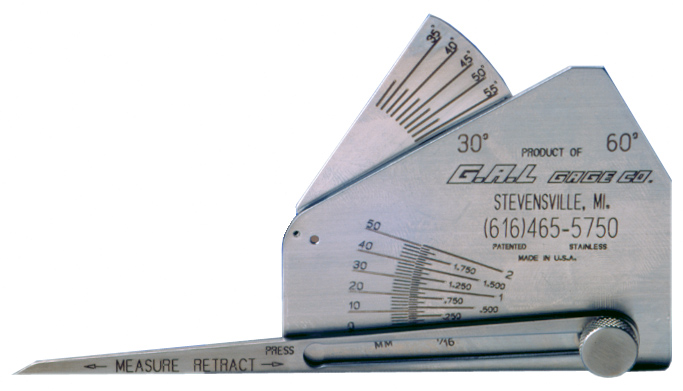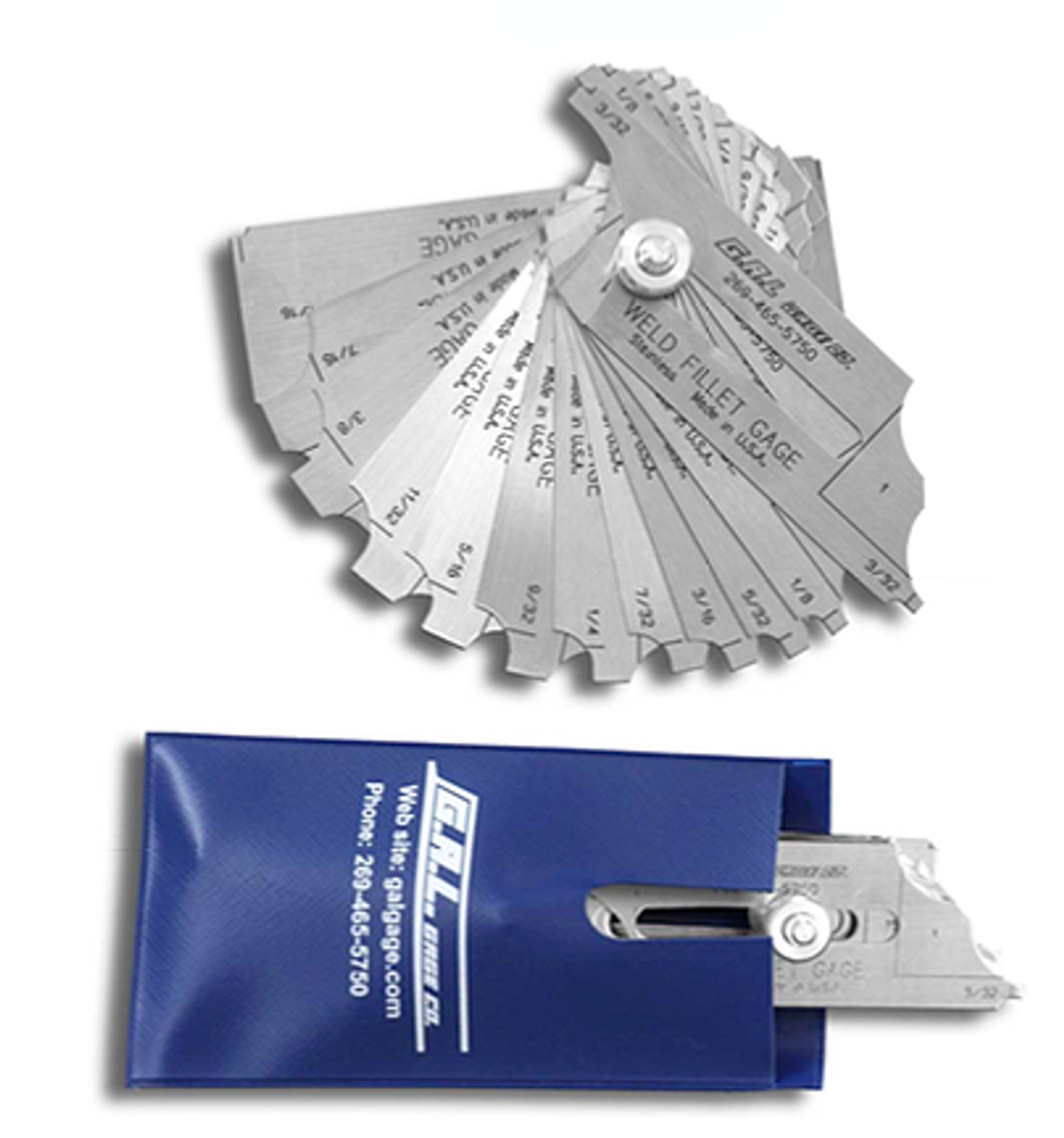Leading Strategies for Measuring Gauge Fillet Weld Properly
Leading Strategies for Measuring Gauge Fillet Weld Properly
Blog Article
The Ultimate Overview to Fillet Weld Quality Assurance: Guaranteeing Stamina and Toughness in Your Welded Joints
In the realm of welding, guaranteeing the stamina and durability of fillet welds is extremely important for the integrity of bonded joints. The quality assurance steps executed during the welding procedure can considerably impact the structural stability of the final item. From the selection of proper materials to the careful examination of welds, each action plays an essential function in establishing the total high quality of the weld joint. As we embark on this expedition of fillet weld quality control, we will discover vital aspects that influence weld toughness, explore efficient assessment methods, and talk about approaches for stopping usual weld flaws. Keep tuned to find just how mastering these techniques can elevate the durability and integrity of your bonded joints.
Relevance of Fillet Weld High Quality Control
Ensuring correct fillet weld quality control is extremely important in guaranteeing the architectural honesty and durability of bonded parts in various markets. Fillet welds are frequently utilized in architectural steelwork, bridges, pressure vessels, pipes, and other crucial framework where the stamina of the weld is important to total security and efficiency. Quality control actions such as aesthetic inspections, non-destructive screening, and adherence to welding treatments help identify potential issues like absence of blend, insufficient penetration, damaging, or extreme reinforcement.
Key Aspects Influencing Weld Stamina
Achieving optimum weld toughness calls for careful factor to consider of different essential variables that affect the stability and resilience of the bonded joint. The very first vital factor is correct joint preparation, which entails cleansing the base steels to get rid of any impurities that might weaken the weld. Furthermore, the fit-up of the joint is vital to make sure correct penetration and combination of the filler product.
The selection of the proper welding strategy and parameters also plays a substantial role in identifying weld strength. Factors such as heat input, traveling rate, and electrode angle can influence the high quality of the weld. Keeping the right interpass temperature throughout multi-pass welding is important to protect against breaking and make certain a strong bond between the layers.
Moreover, the option of filler product and its compatibility with the base metals is critical for accomplishing high weld strength. Utilizing filler product with the appropriate mechanical homes can boost the general stability of the weld. Post-weld warm therapy and appropriate evaluation methods are necessary steps in ensuring the toughness and durability of the bonded joint.
Evaluation Approaches for Weld Stability

One more crucial assessment method is liquid penetrant screening, where a fluid dye is put on the weld surface - Gauge Fillet Weld. The color seeps right into any type of surface-breaking flaws, making them visible under UV light. This approach works for identifying problems that might not show up to the naked eye


Ultrasonic screening is additionally widely utilized for examining weld integrity. High-frequency acoustic wave are directed into the weld, and any interruptions in the audio wave pattern suggest prospective defects like splits or absence of combination.
These evaluation methods play an essential role in making sure the high quality and integrity of welds, ultimately adding to the general toughness and resilience of welded joints in industrial settings.
Protecting Against Typical Weld Flaws
In order Gauge Fillet Weld to maintain the architectural honesty of bonded joints in industrial applications, it is important to implement precautionary measures to address usual weld issues. One common flaw is absence of combination, where the filler material fails to bond adequately with the base steels, leading to vulnerable points in the weld. This can be prevented by making certain proper heat control and making use of the right welding strategy.
One more regular concern is porosity, triggered by gas entrapment in the weld steel during the welding procedure. To stop this, it is vital to clean up the base steels extensively, utilize completely dry electrodes, and keep a suitable welding environment with correct air flow.
Additionally, fractures in welds can endanger the joint's stamina. To prevent this defect, it is necessary to control the cooling rate after welding, utilize pre-heating when needed, and select appropriate welding specifications.
Enhancing Bonded Resilience With Proper Methods
One essential technique to boost weld sturdiness is to make sure correct weld bead placement. By view publisher site placing the weld grain precisely within the joint, the weld's strength and resistance to fatigue can be dramatically improved.
Additionally, employing proper pre-weld and post-weld warm therapies can assist decrease recurring stresses and boost the weld's durability, making it a lot more immune to splitting and failing in time. Another technique to enhance weld sturdiness is to utilize top quality welding consumables and base products. Choosing the appropriate filler steel and guaranteeing the tidiness of the base metals can prevent inclusions and various other problems that could endanger the weld's sturdiness. By carrying out these correct strategies, welders can make sure that their welded joints display remarkable stamina and sturdiness, fulfilling the finest criteria.
Conclusion
To conclude, maintaining top quality control requirements for fillet welds is essential for guaranteeing the strength and resilience of bonded joints. By understanding the vital elements affecting weld toughness, making use of inspection methods for weld honesty, preventing typical weld problems, and employing proper techniques, welders can enhance the overall longevity of their welds. It is essential to focus on quality assurance measures to create trusted and resilient welded joints.
In the realm of welding, making certain the strength and longevity of fillet informative post welds is vital for the honesty of bonded joints. As we embark on this expedition of fillet weld high quality control, we will certainly discover important factors that affect weld strength, dig into efficient examination approaches, and talk about methods for stopping typical weld flaws.Attaining optimal weld toughness calls for cautious factor to consider of numerous key elements that influence the stability and toughness of the bonded joint (Gauge Fillet Weld).In verdict, keeping high top quality control criteria for fillet welds is critical for ensuring the stamina and sturdiness of bonded joints. By understanding the key factors influencing weld stamina, utilizing evaluation techniques for weld integrity, stopping common weld flaws, and using appropriate strategies, welders can boost the general resilience of their welds
Report this page